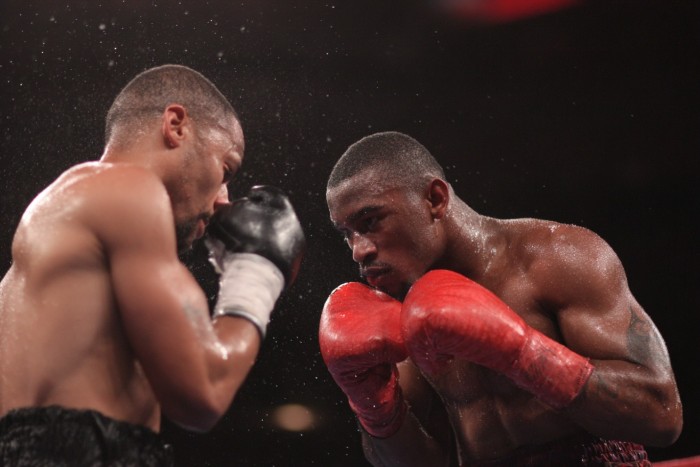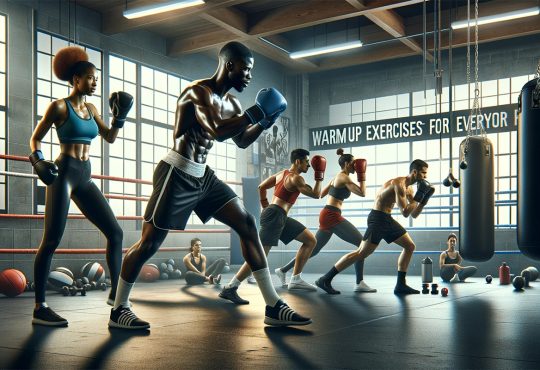
Does Boxing Make You Taller?
You ever hear someone say boxing might stunt your growth? Yeah, I’ve heard it a dozen times—usually from a well-meaning parent watching their teenager throw a few heavy punches in the garage. The idea that boxing could somehow shrink you or mess with your height development during adolescence is one of those persistent myths that just won’t die. And I get why—it sounds plausible. All that impact, the joint compression, maybe even some concern about skeletal maturity getting disrupted. But here’s the thing: physical activity, especially during growth spurts, is a lot more nuanced than just “good” or “bad.”
In this piece, you’ll get a breakdown of where these boxing and height myths come from, how combat sports affect your bone health and growth plates, and what the actual science says about exercise and stature during those crucial teenage years. Let’s unpack it.
Where the Boxing and Height Rumor Comes From
You’d be surprised how often I hear this in the gym: “Coach, will boxing make me taller?” or the more nervous version, “Am I gonna stop growing if I keep sparring?” Honestly, this whole idea didn’t just pop out of nowhere—it’s been floating around locker rooms and training halls for decades. Part of it, I think, comes from the way fighters carry themselves. You see a young boxer after a few months of serious training, and suddenly their posture’s sharper, chest is up, back straighter—they just look taller. That kind of visual height throws people off, especially when you’re comparing them to their slouched-up classmates.
Then there’s the gym folklore—those half-truths passed down like gospel. You know, the old trainers who swear certain body types are “built” for boxing, or that “shorter fighters are more explosive.” It all feeds into this myth-making loop. Plus, let’s be real: Hollywood hasn’t helped. Watch any boxing movie, and you’ll notice the fighters always look bigger than life—broad-shouldered, standing tall, framed like warriors. That kind of combat aesthetic sticks with people.
What I’ve found is that most of these beliefs aren’t based on science—they’re based on perception. And perception, especially when it’s shaped by movies, gym culture, and a little insecurity, isn’t always the most reliable source.
What Science Says About Height and Physical Activity
So let’s clear something up right away—your height’s not decided by how many rounds you spar, it’s mostly baked into your DNA. Genetics pull the biggest weight here (pun intended), but they’re not the whole story. What I’ve found, especially coaching teens in that critical 13–18 age window, is that how you treat your body—your sleep, your diet, your activity level—absolutely shapes whether you hit your full height potential or fall short (literally).
You’ve probably heard about growth plates (or epiphyseal plates, if you’re fancy). These are soft areas at the ends of long bones that stay open during adolescence. That’s where height comes from. Now, here’s where it gets interesting: intense physical activity, especially stuff with impact—like boxing—doesn’t close those plates early unless something goes wrong, like chronic injury or extreme overtraining. In fact, moderate training boosts human growth hormone (HGH) and improves blood flow to bones. That’s good news.
What I’ve seen is, when your hormonal balance is steady—good sleep, manageable stress, solid nutrition—physical activity helps, not harms. The key is not hammering your body into the ground. So no, boxing doesn’t stunt growth… but skipping rest days just might.

The Impact of Boxing Training on the Body
Here’s something you’ll notice after just a few weeks of serious boxing training—your body starts working like one connected machine, not a bunch of random muscles firing on their own. That’s what the sport does at its best. It builds up your core, your back, your hips—everything through the kinetic chain—and forces it all to move in sync. I’ve seen it time and again: boxers who start off with rounded shoulders and weak posture slowly straighten up, stand taller, and gain this almost effortless balance and stability. It’s not just muscle—it’s structure.
Now, people ask me a lot about joint compression or whether boxing “wears down” the spine. And look, any sport has risks if you train wrong. But controlled, well-programmed anaerobic training in boxing? It actually improves spinal alignment through core strengthening and neuromuscular adaptation. What I’ve found is, boxing doesn’t compress you—it stabilizes you. The biomechanical work you’re doing—foot pivots, punch rotations, trunk control—it’s pure functional movement.
The key? Don’t skip mobility. Don’t grind out bad form just to go harder. And don’t ignore what your body’s telling you. Boxing sharpens your posture and skeletal support if you train smart. That’s been my experience—every time
Does Boxing Stunt Growth in Teenagers?
If you’ve ever hung around a youth boxing gym, you’ve probably heard someone say, “Careful, boxing can stunt your growth.” I’ve heard that one since I was a kid—usually from parents clutching water bottles on the sidelines. But here’s the truth: there’s no solid medical evidence showing that boxing, when properly supervised, interferes with adolescent growth. Pediatric orthopedics and the American Academy of Pediatrics both point out that what can affect growth are serious injuries—especially those that damage growth plates, the soft zones at the ends of long bones where height comes from.
Now, sure, boxing’s a contact sport. But if you look at USA Boxing’s safety standards—mandatory headgear, strict supervision, controlled sparring—the injury rates in teen boxing are actually lower than in football or gymnastics. What I’ve found, both as a coach and a former fighter, is that most young boxers develop stronger bones and better balance, not stunted growth. The only real danger comes from bad coaching or overtraining—pushing a young body past recovery limits.
So no, boxing doesn’t stunt growth. Poor training habits do. And that’s something you can absolutely control.
Can Boxing Actually Help with Better Posture and Alignment?
Absolutely—and I’ve seen it happen more times than I can count. You take someone who slouches at a desk all day or drags their shoulders around like they’re carrying invisible luggage, put them through three months of solid boxing training, and boom—they start standing taller without even trying. It’s not magic, it’s mechanics.
Boxing drills naturally reinforce posture correction. Every time you practice your stance, you’re aligning your head carriage, spine, and shoulders over your hips. You’re forced into an upright stance—not stiff, but balanced—and that carries over outside the gym, too. Plus, you’re constantly activating your core, which is the foundation for both spinal health and postural endurance. It’s like physical therapy… just louder and sweatier.
Now, I’m not saying boxing alone fixes everything. If you’ve got major imbalances or mobility issues, you still need targeted work. But in my experience, the awareness you gain through boxing—the proprioception, the control, the demand for clean movement—makes you walk taller, move better, and yeah, sometimes even look a little taller, too. Funny how that works.
What Other Sports Actually Contribute to Height?
You know what’s funny? When people talk about “height-increasing sports,” boxing rarely makes the list—and for good reason. While it’s great for posture and overall conditioning, it doesn’t really promote the kind of spinal decompression or dynamic vertical movement that triggers height-related changes during adolescence.
Now, basketball is the big one here. All that constant jumping, reaching, and hanging off the rim (or at least trying to) encourages a stretch effect through the spine and limbs. It’s also tied to bursts of human growth hormone (HGH) due to the explosive, high-intensity movements. Same with plyometrics—those jump-heavy workouts where you’re basically training your nervous system to be more elastic. Great for height potential and athleticism.
Swimming is another one I always recommend for youth development. It’s got that beautiful weightless quality that lets the spine lengthen naturally. Combine that with yoga for flexibility and core control, and you’ve got a killer combo for posture and spinal alignment.
What I’ve found is, if you’re looking to maximize your natural growth window, sports that combine decompression, full-body stretch, and hormonal stimulation tend to give you the edge. Boxing’s still gold for other stuff—but if it’s height you’re chasing, mix in some of the above.
Boxing in Adolescence: Benefits Beyond Height
When you walk into a youth boxing gym for the first time, you can feel it — that mix of noise, sweat, and quiet focus. I’ve worked with a lot of teenagers over the years, and what I’ve learned is this: boxing gives them something most sports don’t — structure with purpose. It’s not just about throwing punches; it’s about learning how to think, breathe, and move under pressure.
Here’s what really stands out:
- Discipline & Self-Confidence: You learn fast that showing up matters more than talent. When a teen nails a combination they’ve practiced for weeks, their self-esteem skyrockets — I’ve seen it happen hundreds of times.
- Cardio Fitness & Reflexes: Boxing pushes your aerobic capacity and reflex training like few other sports. Every session builds endurance and sharper coordination.
- Mental Health & Focus: There’s something therapeutic about hitting pads after a stressful day. Many youth boxing academies under USA Boxing even use it as a structured outlet for managing anxiety or low mood.
So yeah, maybe boxing won’t make you taller — but it’ll make you stronger, steadier, and a hell of a lot more confident in who you are. And that, in my book, is real growth.
Should You Worry About Boxing and Height? Final Thoughts
If you’ve stuck with me this far, you’ve probably figured it out already—no, boxing doesn’t stunt your growth. That myth’s been floating around gyms and backyards for years, but it’s just not backed by the science. What I’ve found, both coaching and raising a young athlete myself, is that the bigger risk isn’t from boxing itself—it’s from overtraining without proper recovery, or jumping into bad programs with zero focus on form or safety.
Now, here’s what the consensus looks like from the folks who actually study this stuff: the American Academy of Pediatrics and other medical authorities all agree that youth boxing, when done under qualified supervision (like through USA Boxing), is safe in terms of physical development. Growth plates don’t just snap shut because your kid hit the heavy bag too hard.
If you’re a parent worried about your teen’s height or health, your best move is to prioritize good coaching, smart programming, and balance—not just in the ring, but with school, nutrition, and sleep, too. Boxing can build a stronger, more focused, more confident kid. And if that’s the tradeoff? I’d say you’re on the right path.




